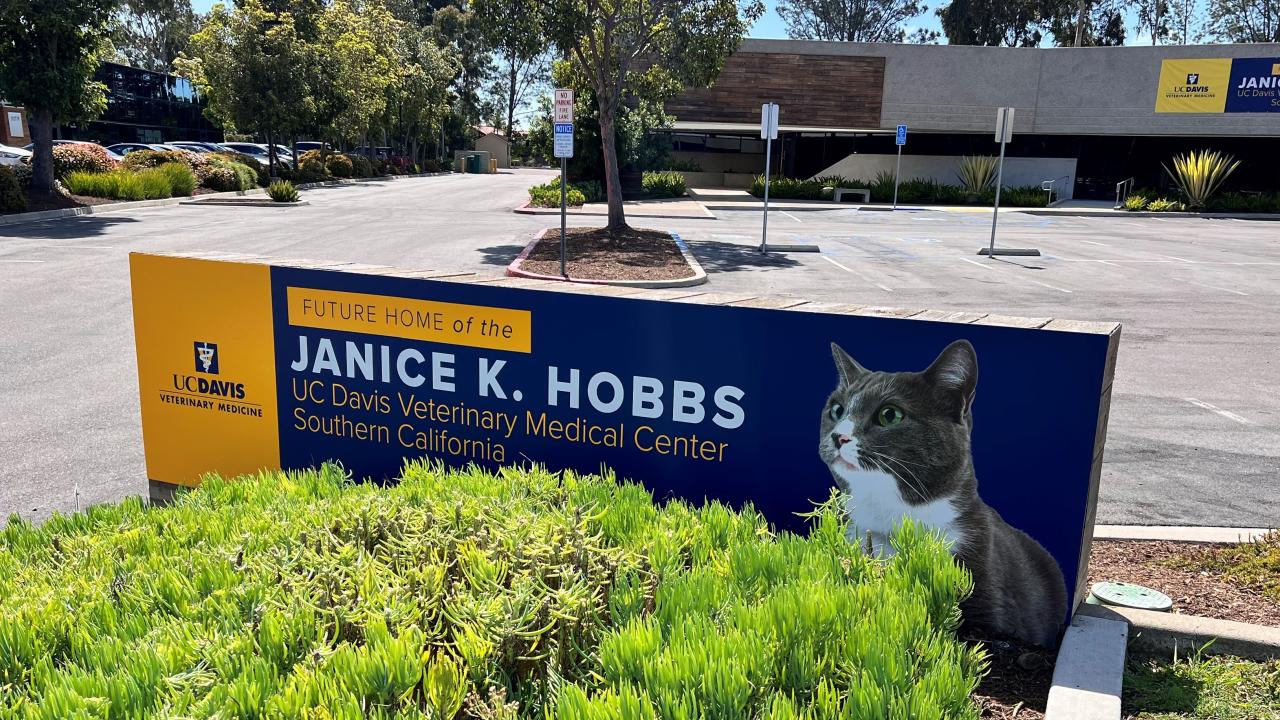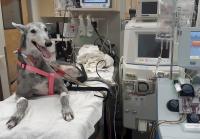
UC Davis Expands Veterinary Services in Southern California

The University of California (UC), Davis has purchased a building in San Diego to expand its veterinary services in Southern California, with the new center slated to open in 2026.
After the move, the existing center, UC Veterinary Medical Center - San Diego, will become the Janice K. Hobbs UC Davis Veterinary Medical Center Southern California. The center’s namesake, Jan Hobbs, is a Southern California philanthropist, animal lover, and UC Davis donor who helped make the building purchase possible.
The new center, located at 5040 Shoreham Place in San Diego, will greatly expand the school’s veterinary care in Southern California. Once renovated, the Janice K. Hobbs UC Davis Veterinary Medical Center Southern California will provide 24/7 veterinary emergency and critical care and will expand its veterinary specialty services to include cardiology, clinical pharmacy, hemodialysis, nephrology and advanced urology, internal medicine, oncology, surgery, and radiology/diagnostic imaging. It is one of the few locations in the country that offers hemodialysis for treatment of kidney failure and other advanced therapies for toxicities and immune-mediated diseases.

While the hospital will focus on providing life-changing treatment for cats, dogs, and other beloved companion animals, it will also support UC Davis experts in providing field medicine to wildlife and exotics — for example, animals being cared for by the San Diego Zoo Wildlife Alliance — and working with local veterinarians to foster greater regional capacity in specialty animal care.
“The Janice K. Hobbs UC Davis Veterinary Medical Center Southern California will be an even greater hub of innovation and treatment for this region’s pets and veterinary community,” said Dr. Brett Feder.

The current UC Veterinary Medical Center - San Diego, located at 10435 Sorrento Valley Road in San Diego, and with a second location at 2055 Montiel Road in San Marcos, has operated as a satellite facility of the UC Davis Veterinary Medical Teaching Hospital since 2008. An earlier location opened in 2000 following the state’s allocation of funds to support the expansion of UC Davis’ veterinary care mission into Southern California. The operations of both current locations will be folded into the new facility.
UC Davis provides specialty veterinary services, which means that it works closely with general practice veterinarians in Southern California who refer their patients for advanced clinical care. Demand for animal health services in the region has already outpaced supply and is predicted to grow steadily over the coming years. UC Davis’ expansion will help to meet that need.
“As the number one ranked veterinary school in the nation, UC Davis is proud to be able to serve both Northern and Southern California with its innovative, advanced care,” said Dr. Mark Stetter, the dean of the School of Veterinary Medicine. “We are grateful to Jan Hobbs, the veterinary and animal owner communities, and others who have made this expansion possible.”
# # #
More information, including about Jan Hobbs
About the School of Veterinary Medicine
The UC Davis School of Veterinary Medicine, which is celebrating its 75th anniversary in 2023-24, has more than 700 students pursuing the doctor of veterinary medicine and other professional and graduate degrees, and offers the nation’s largest veterinarian house officer (residents, fellows and interns) program with more than 40 specialties. The school’s teaching hospital treats more than 50,000 patients each year, and more than $64 million in annual research funding to the school is applied to benefit animal, human, and planetary health.
